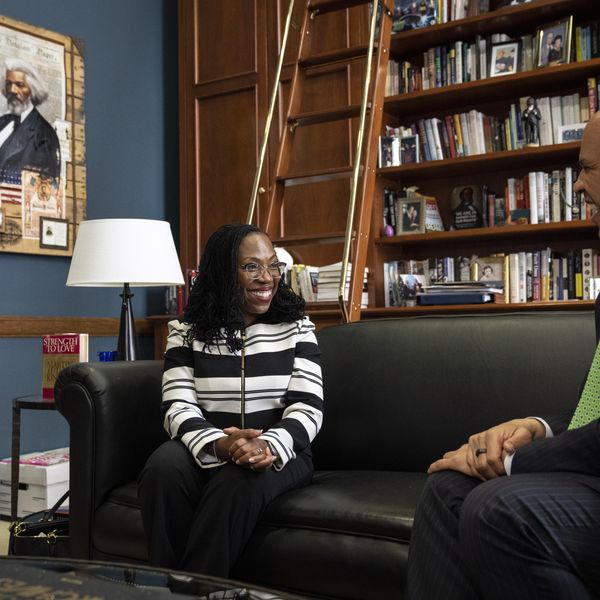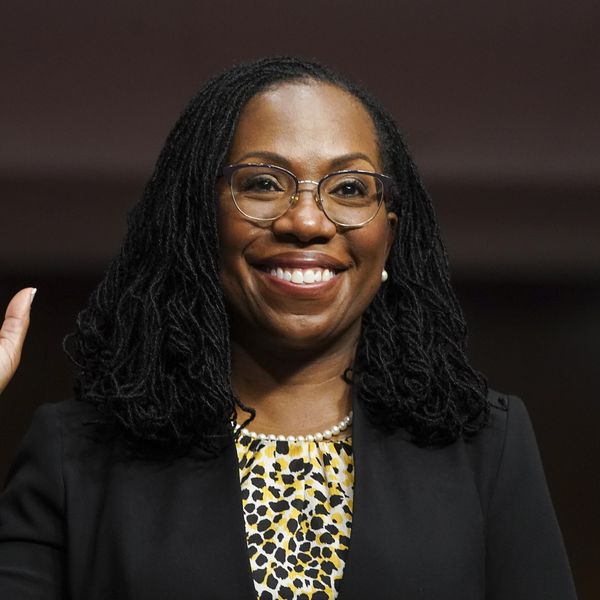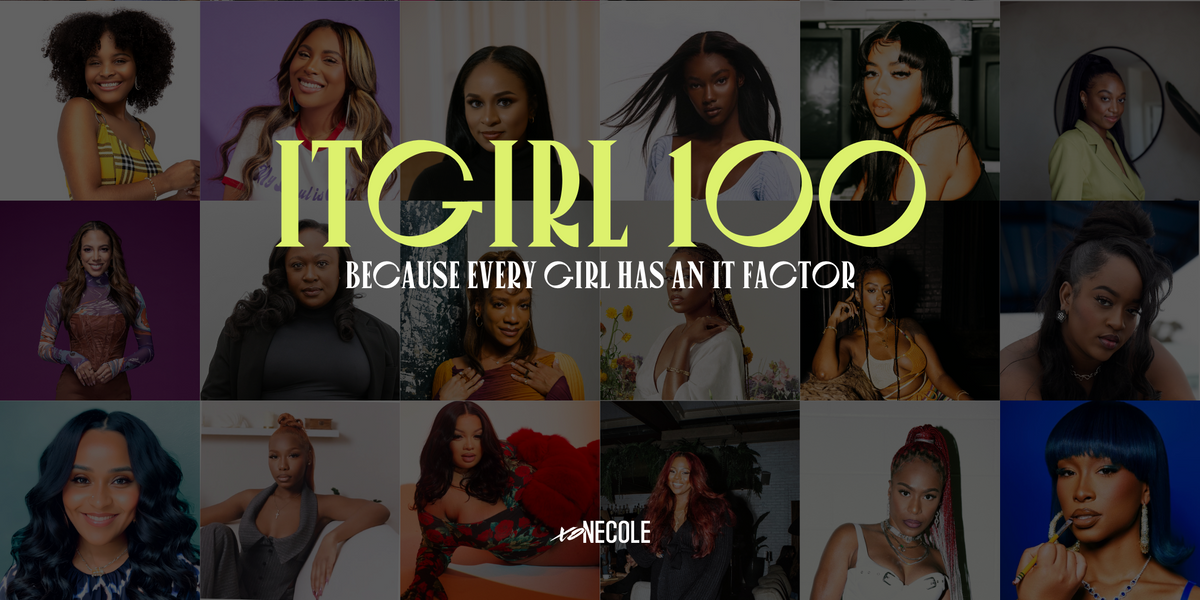
Kamala Harris Is EMPOWERing Women To Speak Up Against Workplace Sexual Harassment
Sexual harassment in the workplace is not anything new.
It didn't come about as a new trend, sticking around longer than intended.
It didn't arise suddenly, without warning or explanation.
It didn't appear overnight with a hashtag.
Instead, sexual harassment in the workplace has always been there, simmering inaudibly beneath the surface for years, decades, centuries.
Why?
Well, because until the #MeToo movement, there was a truth that was understood amongst all industries and women wronged. The truth was: women were liable for what someone else took from them; and harassment persisted because perpetrators and employers never faced any consequences.
Until now.
Now, Congresswomen Kamala Harris (D-CA) and Lisa Murkowski (R-AK) are no longer tolerating idleness towards the fight against workplace sexual harassment. The voices of the #MeToo movement will no longer be silenced as they travel exponentially towards Congress. On Wednesday afternoon (July 18), Congress introduced the EMPOWER Act, which stands for Ending the Monopoly of Power Over Workplace Harassment through Education and Reporting, to end sexual harassment for all women workers.
The EMPOWER Act prohibits non-disparagement and nondisclosure clauses as "a condition of employment, promotion, compensation, benefits or change in employment status" that deal with sexual harassment—putting an end to the clauses that have been used to stop victims from speaking out in the past.
In addition, companies would not be allowed tax deductions for legal fees incurred through sexual harassment cases, and they would be required to disclose the number of settlements for sexual harassment cases and the presence of individuals with repeated settlements in their yearly SEC filings.
The EMPOWER Act would also create a confidential tip-line for harassment reports under the Equal Employment Opportunity Commission (EEOC), and mandates companies to have sexual harassment prevention training programs in place. Ai-jen Poo, Executive Director of National Domestic Workers Alliance and Co-Director of Caring Across Generations stated:
"All women deserve dignity and safety at work, regardless of where they work or the nature of the work they do. Despite the importance of their work supporting families and maintaining homes, domestic workers are especially vulnerable to abuse, in large part because they aren't adequately protected under federal labor laws. I commend Senators Harris and Murkowski for including domestic workers in the EMPOWER Act and advancing new sexual harassment policies. Now survivors will have more accessible ways of reporting harassment, and our voices will no longer be silenced as a condition of keeping our jobs."
The bill is a direct response to hundreds of thousands of sexual harassment complaints that have come to light in the #MeToo era and, especially, to the measures companies have used to keep women from discussing it for years. Human Rights Campaign Government Affairs Director David Stacy said:
"The epidemic of sexual harassment in the workplace is pervasive across all industries and impacts all demographics -- including the LGBTQ community. Far too often, survivors of workplace harassment are forced into silence while perpetrators and employers avoid consequences. Employers should not be allowed to hide behind nondisclosure agreements that pressure survivors to remain silent in exchange for their job."
Nevertheless, despite the bill having bipartisan support, nothing has happened in finalizing the bill. To ensure the bill's continuity, Congresswomen and allies—Rep. Lois Frankel (D-FL), who is sponsoring the bill with Reps. Ted Poe (R-TX), Barbara Comstock (R-VA), Jerry Nadler (D-NY), and Lisa Blunt Rochester (D-DE)—would need support from House and Senate leaders.
However, House Speaker Paul Ryan and Senate Majority Leader Mitch McConnel have yet to voice their stance on eradicating sexual harassment.
Featured image by Getty Images
Taysha Robinson is a writer and high school English teacher, based in metro-Atlanta. A self described philomath, you can find her reading books and articles of every genre, attending educational conferences, and hiking wherever the terrain will allow.
ItGirl 100 Honors Black Women Who Create Culture & Put On For Their Cities
As they say, create the change you want to see in this world, besties. That’s why xoNecole linked up with Hyundai for the inaugural ItGirl 100 List, a celebration of 100 Genzennial women who aren’t afraid to pull up their own seats to the table. Across regions and industries, these women embody the essence of discovering self-value through purpose, honey! They're fierce, they’re ultra-creative, and we know they make their cities proud.
VIEW THE FULL ITGIRL 100 LIST HERE.
Don’t forget to also check out the ItGirl Directory, featuring 50 Black-woman-owned marketing and branding agencies, photographers and videographers, publicists, and more.
THE ITGIRL MEMO

I. An ItGirl puts on for her city and masters her self-worth through purpose.
II. An ItGirl celebrates all the things that make her unique.
III. An ItGirl empowers others to become the best versions of themselves.
IV. An ItGirl leads by example, inspiring others through her actions and integrity.
V. An ItGirl paves the way for authenticity and diversity in all aspects of life.
VI. An ItGirl uses the power of her voice to advocate for positive change in the world.
Let’s make things inbox official! Sign up for the xoNecole newsletter for daily love, wellness, career, and exclusive content delivered straight to your inbox.
What These Beauty Editors And Writers Learned About Beauty From Their Moms
Beauty editors are the heart of the industry. They work endlessly to provide us with inspiring stories and keep us up to date on beauty trends that help remind us we are that girl. However, before they were the trailblazers of the beauty industry, they were little girls inspired by their mothers’ beauty routines.
Watching them every morning as they put on their favorite lipstick and got ready for the day. Dreaming of the moment when they, too, could play in their mother's makeup bag and discover the secret behind the captivating beauty world.
Asia Milia Ware, Kayla Greaves, and Shauna Beni are three masterminds behind some of your favorite digital publications. They have pushed beauty trends and started groundbreaking conversations in the industry. Not only are they some of the most talented beauty writers and editors, but they are fabulous women who get it from their mamas!
We chatted with each of them to learn more about how their mothers have influenced their love for beauty.
Asia Milia Ware
Beauty and Fashion Writer, The Cut
Asia Milia Ware is a beauty and fashion force to be reckoned with. You can catch her on somebody's island in the latest fashion or at an occasional function with friends and a bold red lip. Ware’s infectious love for beauty and fashion started as a young girl watching her mom’s simple yet profound beauty routine. “My mom’s beauty routine was simple. She had her go-to Revlon red lipstick that doubled as a blush, followed by Amber Rose perfume oil, and she would do her nails,” says Ware. As Ware gained an admiration for beauty, she would turn her mother's sweet red lipstick kisses into blush. A mother’s love would soon birth the trajectory of Ware’s successful career in the beauty industry.
“It impacted me as a young girl because I saw how it made her feel. I saw the instant mood booster it was to apply her lipstick, and I saw how special she felt when she would go to the hair salon and be pampered instead of doing it herself,” she says. Seeing her mother’s confidence and happiness made Ware crave a similar feeling. Sneaking into her mother’s makeup bag and putting on lipstick became a thrill. That thrill soon turned into Ware tagging along to the nail salon with her aunts. “I saw Black women unapologetically indulging in themselves through beauty, and it was a community I couldn’t wait to be part of.”
Seeing women pour into themselves was pivotal for the way Ware would view self-love, but Ware’s most important lesson in beauty would be self-acceptance. “I was a rebel; if she [her mother] told me I didn't need certain makeup or weave, I would still want it. But, in hindsight, she was teaching me to love everything about myself without the enhancements,” says Ware. Living in a world where beauty can seem more important than who we are, learning to love our core can help enhance our self-confidence and view beauty as an accessory, not a necessity.
Kayla Greaves
Award-winning Beauty Journalist and former Beauty Editor at InStyle
“My mother was very big on beauty. I can’t remember when she ever went out without glam and a fit to match,” says Greaves. The apple doesn’t fall too far from the tree. Greaves is an award-winning journalist who challenges beauty norms while looking effortless in glam. Like her mother, she has a wash and roller set and well-manicured nails. “She had her weekly wash days, followed by doing her own roller set, and while under the dryer, she would be doing her mani/pedi. Many of my memories of her have become fuzzy, but as a little girl, I remember looking up to her and thinking she was the most beautiful woman on the planet,” says Greaves.
Like most little girls, Greaves enjoyed playing in her mother's closet and makeup. She fell into beauty as she tried on her mother's clothes and indulged in her makeup bag. “I always wanted my nails painted, my hair done, and begged her to put a little blush on my cheeks before we went out,” says Greaves. Her mother's passion for beauty was soon embedded in her daughter, who couldn’t wait to define beauty for herself.
As Greaves grew up, she unfortunately couldn’t bask in conversation about beauty with her mother. However, she’s adopted what she remembers of her mom into her routine. “she always had a simple makeup routine, and I've adopted that. My go-to look is a combo of mascara, a little highlighter, and a well-lined red or nude lip. Ironically, I have my mother's lips—maybe that's why they're my favorite feature.” Greaves' mother's love for beauty will forever be remembered and carried through her daughter's spirit.
Shauna Beni-Haynes
Shopping Editor, Teen Vogue
Shauna Beni-Haynes' beauty routines are filled with so much life. From pink hair to vibrant makeup and fashion looks, Haynes' love for beauty knows no bounds. Although Haynes’ relationship with beauty is larger than life, her mom always kept things simple. “All she needed was a classic red lip, red nails, and a big, voluminous blowout. That was her go-to beauty routine, and I love looking back at her pictures and seeing how beautiful she looked,” says Haynes.
Similar to Haynes, her mother created her own rules when it came to beauty. A bold red lip and voluminous hair deeply impacted Haynes at a time when most were doing the opposite. “In a time when the beauty standard was focused on long, straight, silky hair, I could rock my natural curls loud and proud, thanks to the confidence instilled from my mom's beauty routine,” says Haynes. Her mother’s courage became rooted in a lesson for Haynes to use the beauty features she already had, allowing her to embrace her full self.
Let’s make things inbox official! Sign up for the xoNecole newsletter for love, wellness, career, and exclusive content delivered straight to your inbox.
Featured image by Asia Milia Ware/Instagram












